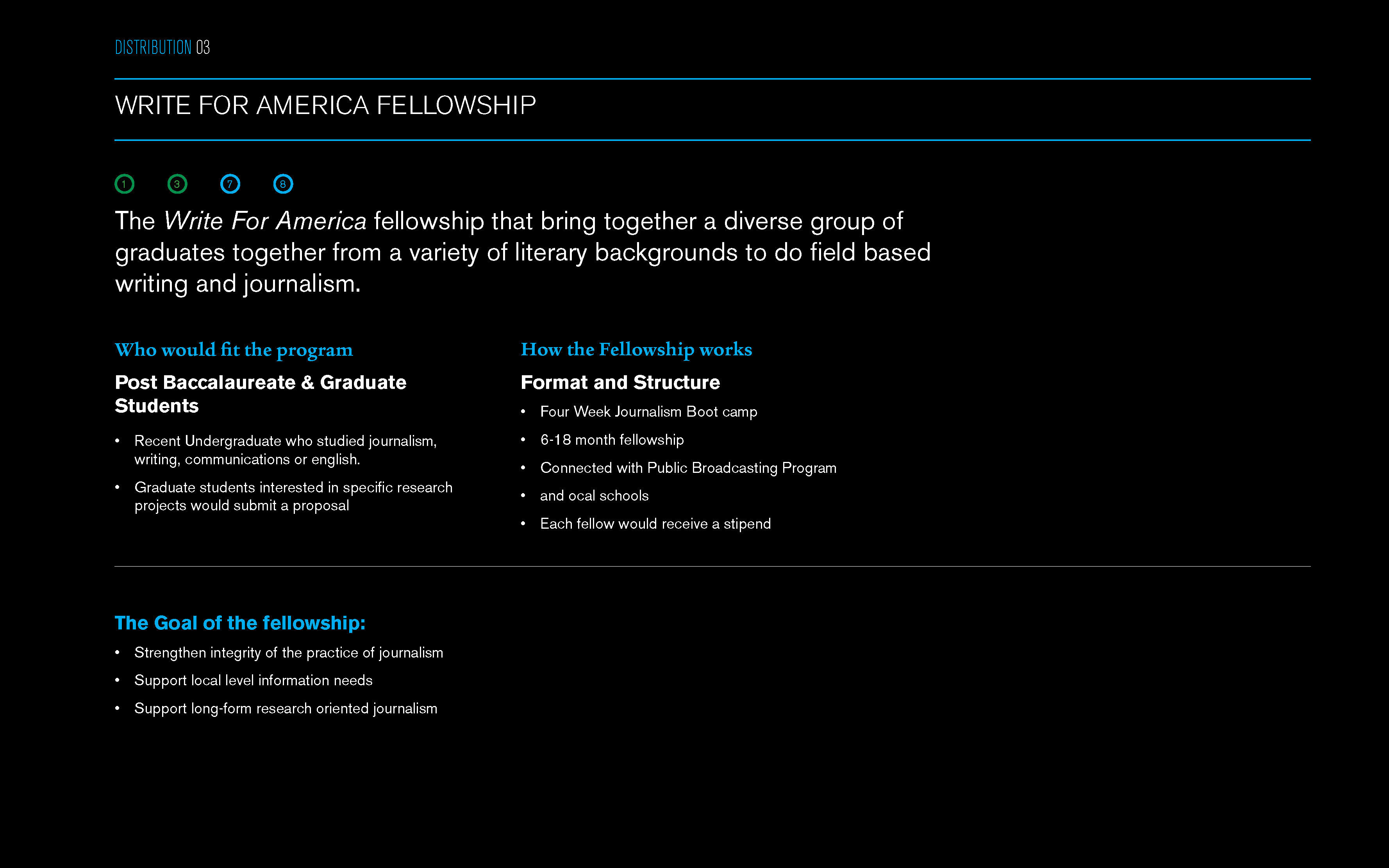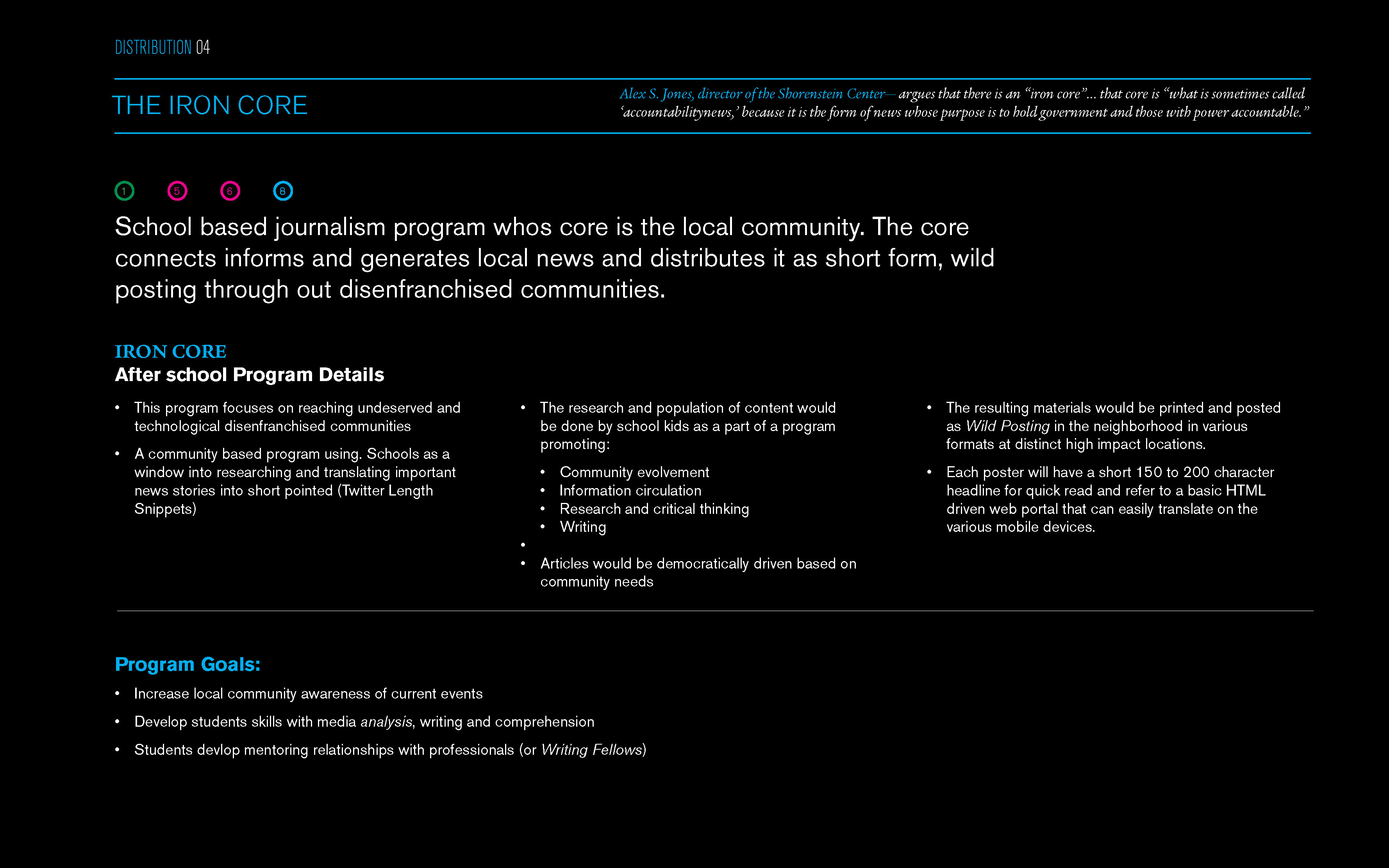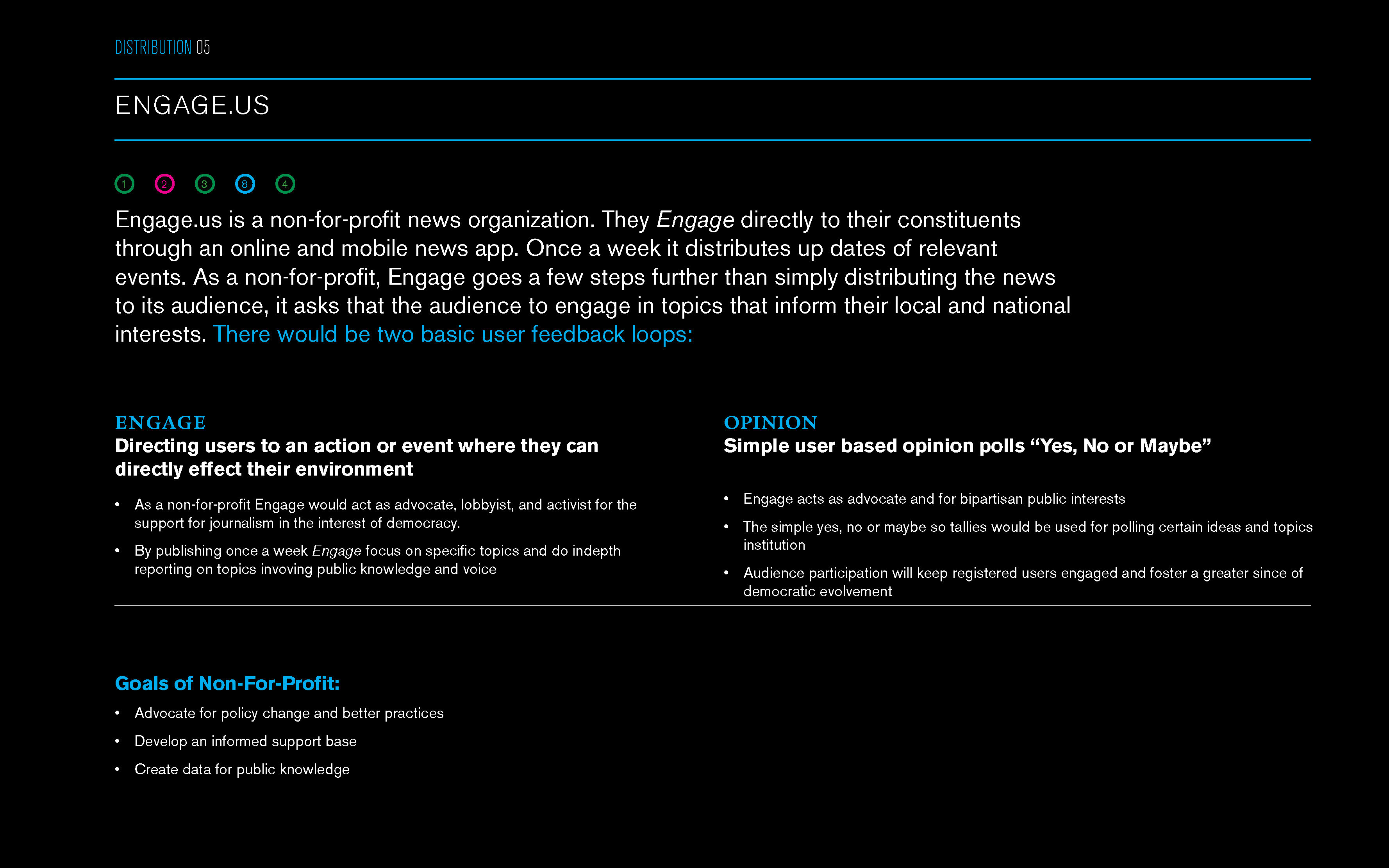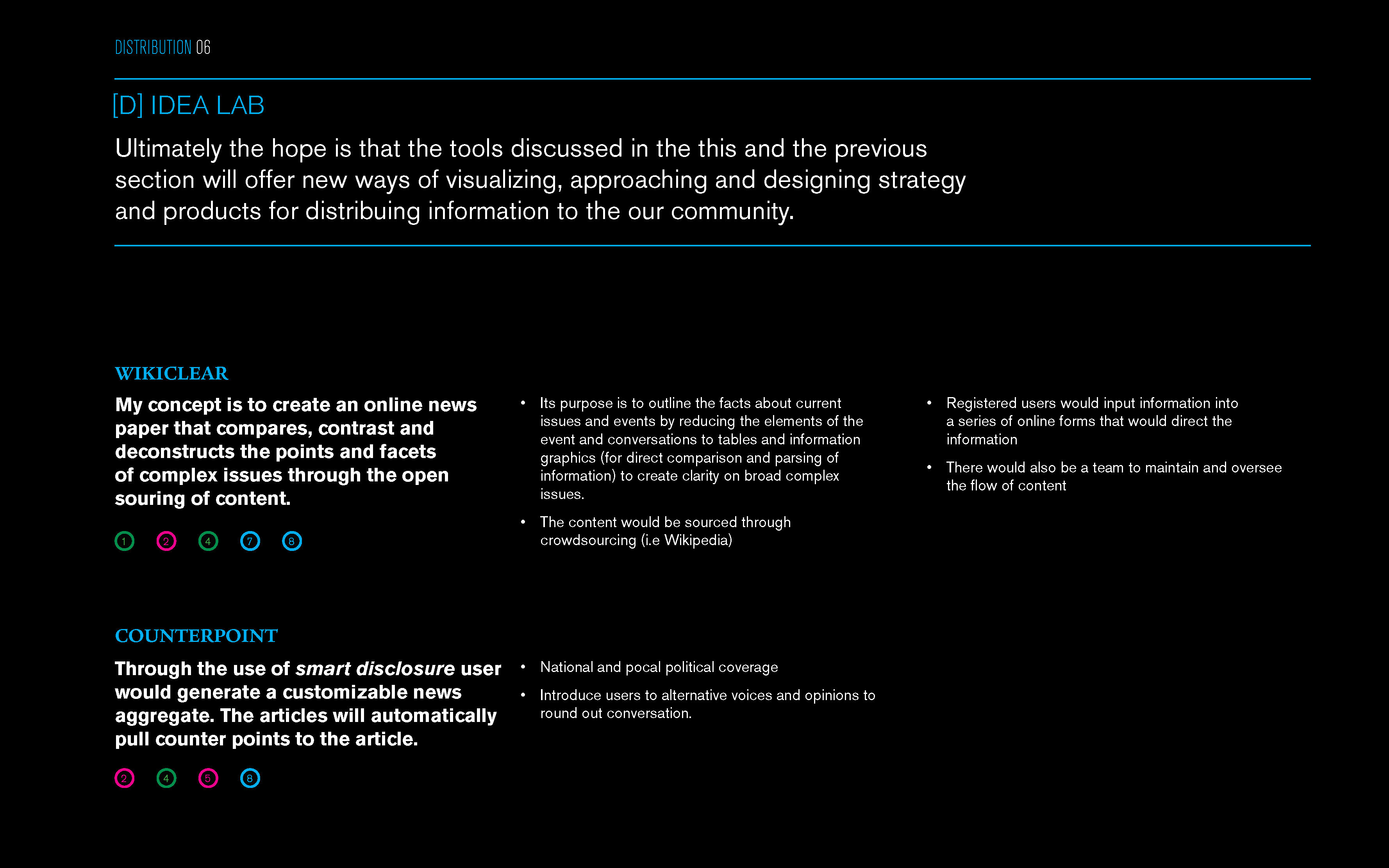PROJECT TITLE :
LAB D: Decoding
The Distribution of Data
For Democracy
Portraits Of Obama: Media, Fidelity, and the 44th President
Using Obama as a prism, this essay examines the culture of American mass media, examining the fidelity of news content amongst the ever-growing, ever-fragmenting, modern media landscape. It investigates the audience’s active engagement in the construction of their relationship to reality, the flawed nature of newsmakers and their perceptions of the world, and offers an alternative narrative approach to the construction of the self.
LAB D:
Decoding The Distribution of Data For Democracy
PROJECT SUMMARY :
Lab d is a design concept for a research and design lab whose mission is to support the free flow of news and information to the public through journalism.
It is the fusion of four components that work to increase, support, and sustain the flow of information through the practice of journalism in order to inform and educate the public. The four pillars are:
Research— understanding the landscape of mass communication and educating the public about its history, structure, and role in society; Advocacy— creating awareness of the importance of an informed public and lobbying for changes to strengthen the foundation of mass communication; Archiving— collecting a body of information that will help support ongoing research and development; Design— creating new tools and strategies in support of the flow of content to the public.
PROJECT TYPE :
Orientation: Design Researcher +
Strategy
Project type: Systems Design
DECONTRUCTING MEDIA
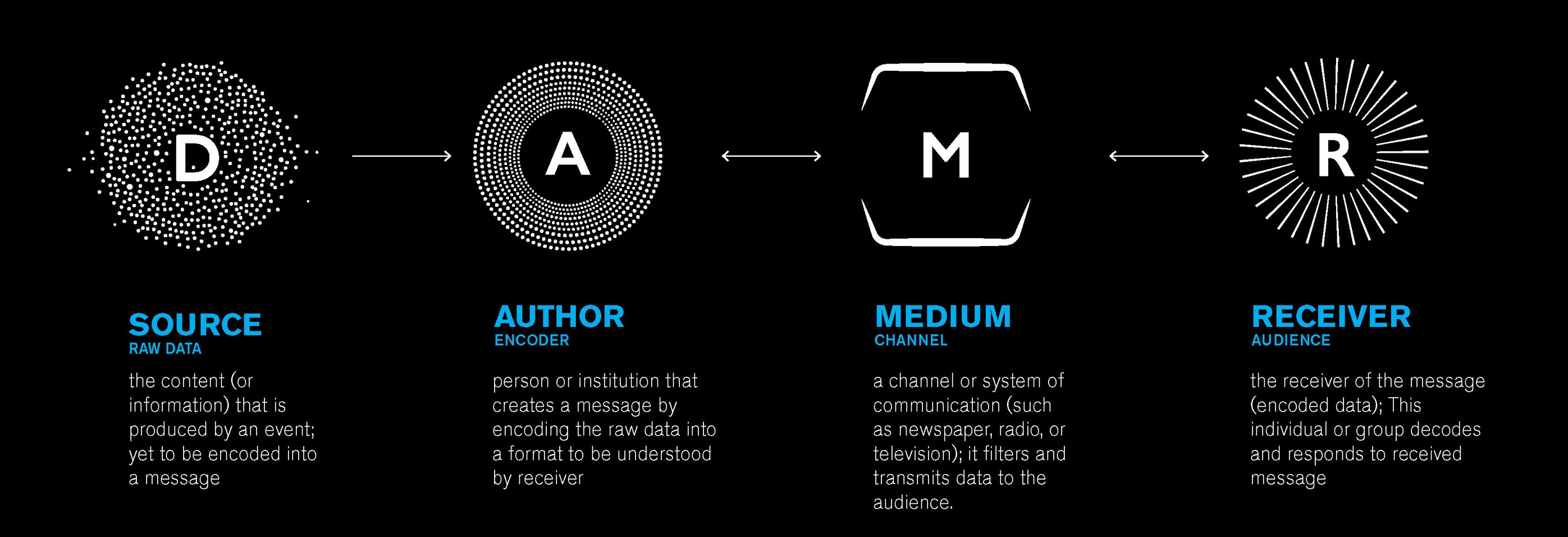
“Communication is a binding force in social relationships without at the same time being visible or having tangible and permanent forms.”
~ Denis McQuail
Because of the magnitude and complexity of the problem I faced, it became clear that it would be necessary to deconstruct the whole and view it in smaller parts that could be visualized and considered more thoughtfully. To do this, I created an exploded view of the communication process. I divided it into the following areas: (a) information realization, (b) authorship, (c) the medium of delivery, and (d) the audience. I later learned that this model was very close to the Lasswell Formula, the basic model of communication theory. I was missing one element—the (e) in my equation—effect. After doing further research on communication models, primarily through Communication Models by Denis McQuail & Sven Windahl, I evolved the model into what you see above.
During the discovery phase, I interviewed several people in the field, including experts in social media,
visual culture, and art activism. From these conversations new questions emerged:
1. Can written and broadcast journalism exist without bias? What role does the audience play in fostering bias?
2. What tools exist to make sure that the information that we are getting is accurate and complete?
3. Is there a way to simplify complex material like Obamacare? And does complexity exist out of necessity?
4. Is there a product that would support these needs?
5. What role does democracy or the illusion of democracy play in the formation of bias? And what is morality's role in the democratic process?
6. What are the possibilities of citizen journalism?
7. And how have new platforms like Twitter or YouTube changed audience engagement and habits?
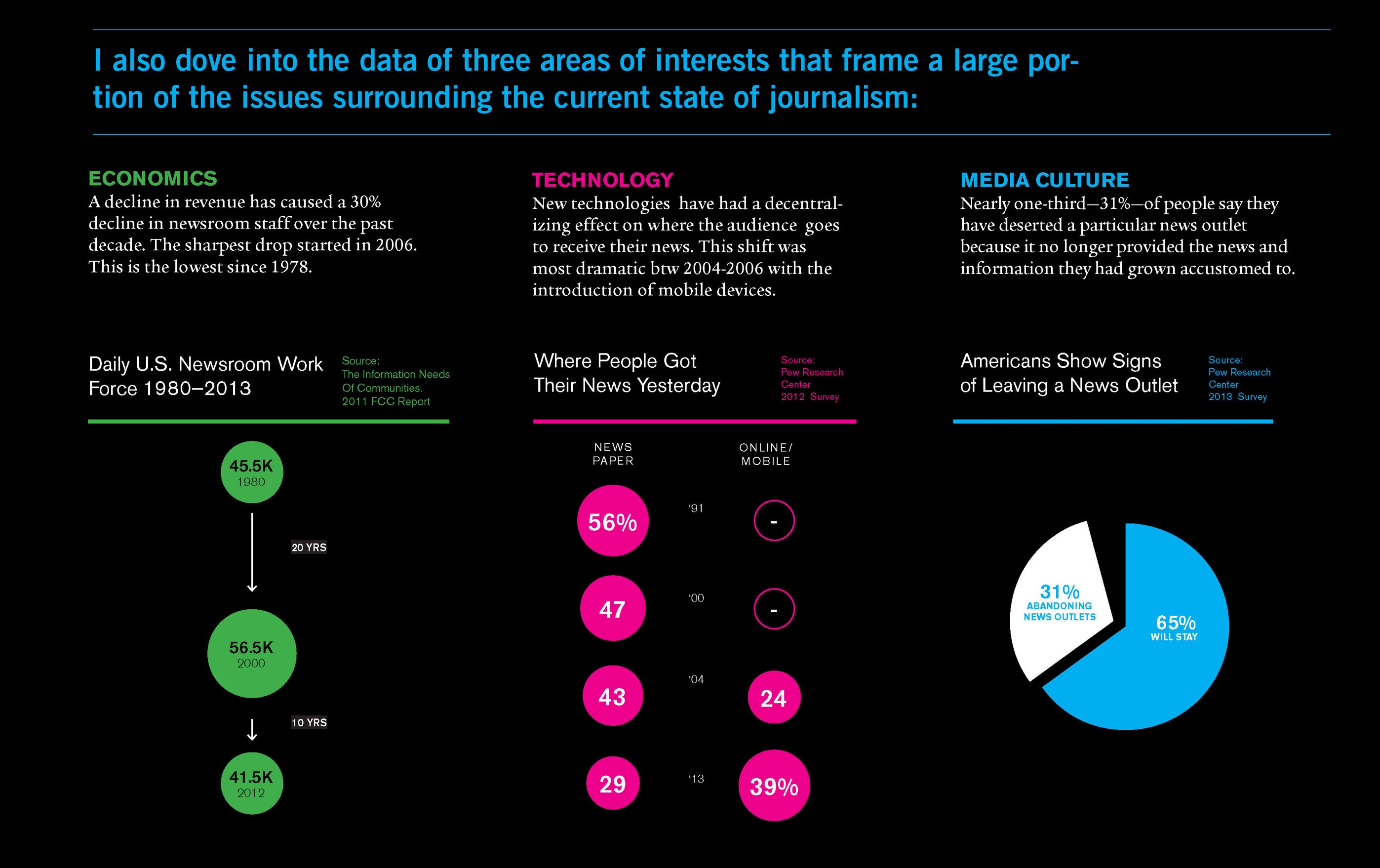
ANALYZING AND ORGANZING FORCES IN OUR NEWS MEDIA SYSTEM
“Our job is only to hold up the mirror...to tell and show the public what has happened.” ~ Walter Cronkite
The question, problems, and solutions framed by technology, the economy, and our culture were cross-referenced against the above model and data to get a better handle on the overall landscape. The below model looks at the forces impacting cross-sections of the communication model on a whole. This afforded me the opportunity to visualize unexpected connections and opportunities that might positively impact the larger system of news media in the U.S.
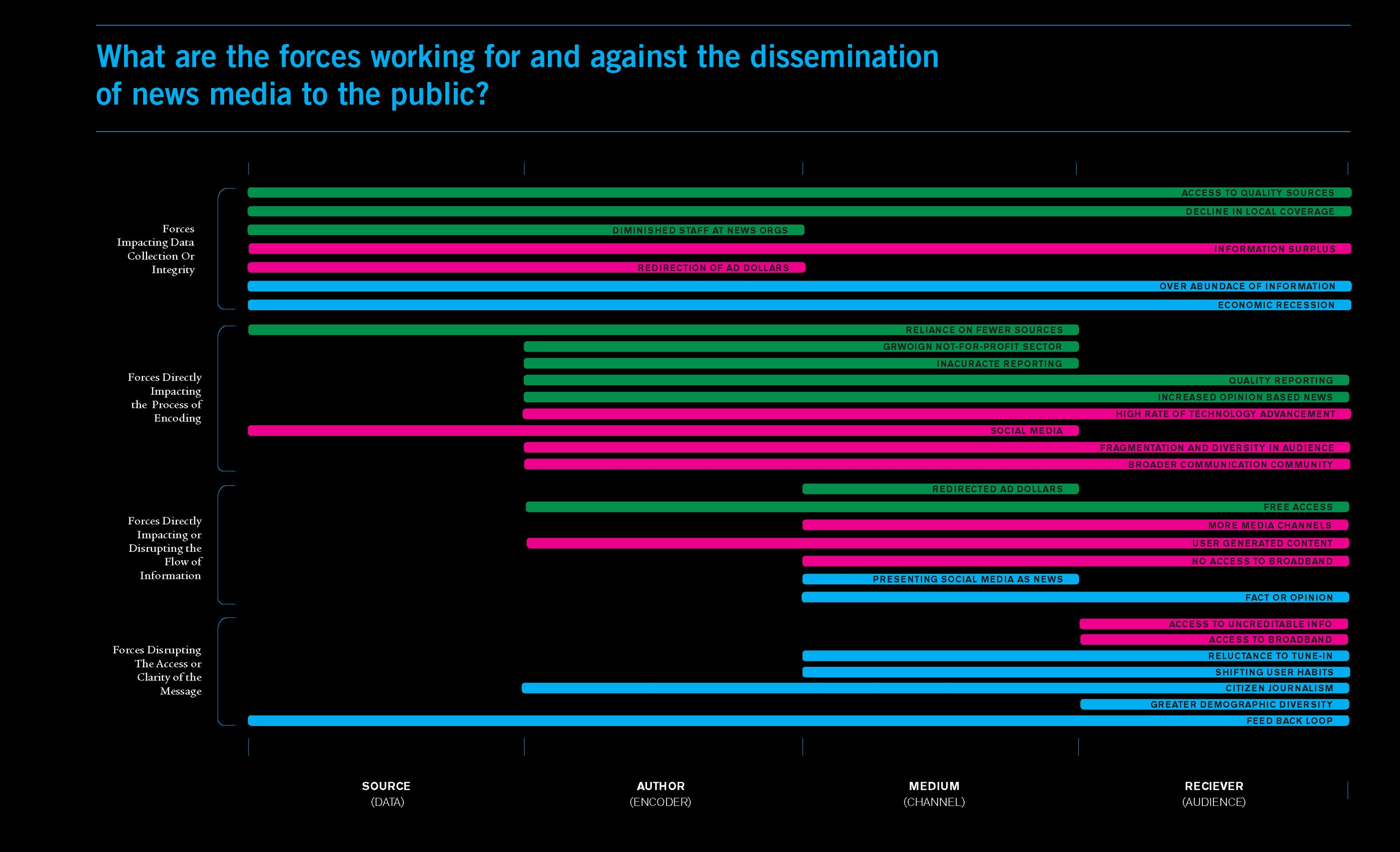
DESIGN OPPORTUNITIES + RESULTS
The unexpected connections between the forces are then able to be mixed and matched to find unique design solutions that are meant to have a positive impact on the associated areas of the communication system—
information realization, authorship, the medium of delivery, and the audience.
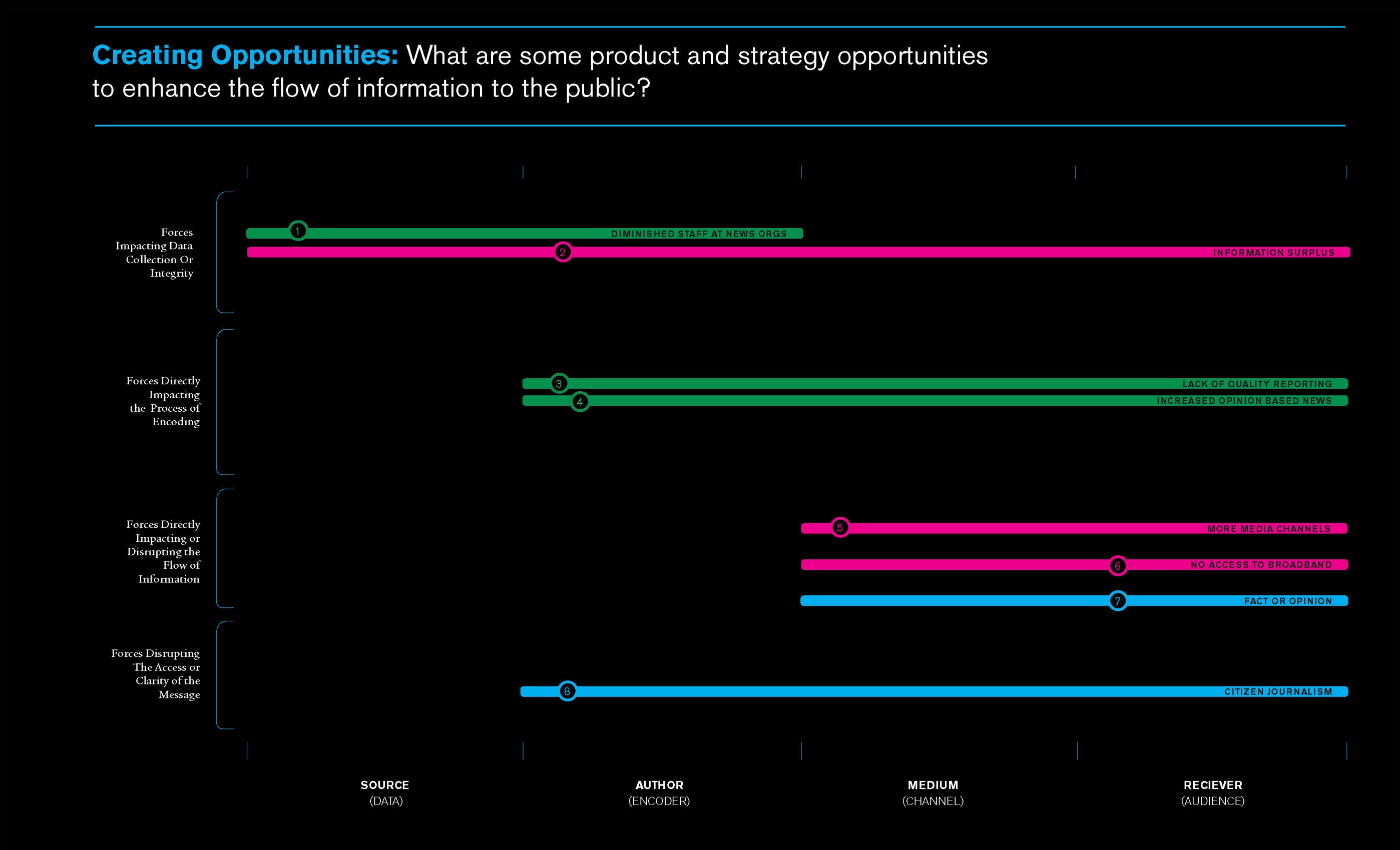
The Results: The numbers above the descriptions correlate to the forces in the above diagram. This unique set of forces brought focus to the challenge, ultimately inspiring the resulting design solution. The five solutions below reflect a variety of challenges, and their forces, across today's news media.
